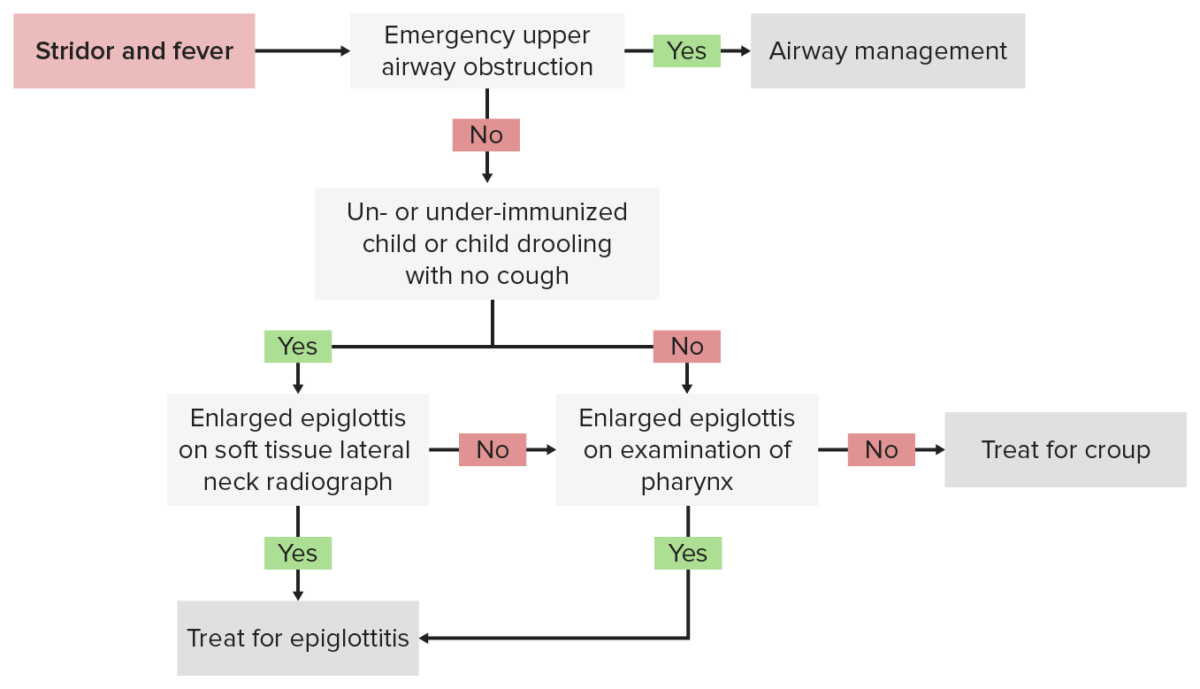Epiglottitis (or "supraglottitis") is an inflammation Inflammation Inflammation is a complex set of responses to infection and injury involving leukocytes as the principal cellular mediators in the body's defense against pathogenic organisms. Inflammation is also seen as a response to tissue injury in the process of wound healing. The 5 cardinal signs of inflammation are pain, heat, redness, swelling, and loss of function. Inflammation of the epiglottis Epiglottis A thin leaf-shaped cartilage that is covered with laryngeal mucosa and situated posterior to the root of the tongue and hyoid bone. During swallowing, the epiglottis folds back over the larynx inlet thus prevents foods from entering the airway. Larynx: Anatomy and adjacent supraglottic structures Supraglottic Structures Laryngomalacia and Tracheomalacia. The majority of cases are caused by bacterial infection; however, several viral and fungal pathogens have been identified, depending on the patient’s immune status and age. Symptoms are rapid in onset and severe. Without treatment, epiglottitis Epiglottitis Epiglottitis (or "supraglottitis") is an inflammation of the epiglottis and adjacent supraglottic structures. The majority of cases are caused by bacterial infection. Symptoms are rapid in onset and severe. Epiglottitis can cause life-threatening airway Airway ABCDE Assessment obstruction that presents with difficulty breathing, stridor Stridor Laryngomalacia and Tracheomalacia, and cyanosis Cyanosis A bluish or purplish discoloration of the skin and mucous membranes due to an increase in the amount of deoxygenated hemoglobin in the blood or a structural defect in the hemoglobin molecule. Pulmonary Examination. Diagnosis is mainly clinical but can be confirmed by pharyngoscopy. The focus of treatment is airway Airway ABCDE Assessment management and administration of antibiotics.
Last updated: Apr 26, 2025
Epiglottitis Epiglottitis Epiglottitis (or “supraglottitis”) is an inflammation of the epiglottis and adjacent supraglottic structures. The majority of cases are caused by bacterial infection. Symptoms are rapid in onset and severe. Epiglottitis can be bacterial, viral, fungal, or noninfectious. In previously healthy children, most causes are bacterial.[1,3,9]

Diagnostic algorithm for epiglottitis
Image by Lecturio.
Bronchoscopy image shows a swollen and inflated epiglottis and arytenoids along with aryepiglottic folds consistent with acute epiglottitis (supraglottitis).
Image: “Bronchoscopy” by Department of Pediatrics, University of Toledo Toledo, Ohio, United States of America. License: CC BY 3.0
Acute epiglottitis presenting with the “thumb sign” in a lateral neck x-ray
Image: “Acute epiglottitis; Lateral view in X-ray imaging.” by Med Chaos – Own work. License: CC0Management may vary based on practice location. The following information is based on US and UK guidelines.
Epiglottitis Epiglottitis Epiglottitis (or “supraglottitis”) is an inflammation of the epiglottis and adjacent supraglottic structures. The majority of cases are caused by bacterial infection. Symptoms are rapid in onset and severe. Epiglottitis is an airway Airway ABCDE Assessment emergency, especially in the pediatric population.
Preparation for early tracheal intubation Intubation Peritonsillar Abscess is crucial:
Subsequent care:
Prognosis Prognosis A prediction of the probable outcome of a disease based on a individual’s condition and the usual course of the disease as seen in similar situations. Non-Hodgkin Lymphomas is good if diagnosed and treated immediately but the disease can lead to death if there is acute and untreated airway Airway ABCDE Assessment obstruction.[3]
Complications of epiglottitis Epiglottitis Epiglottitis (or “supraglottitis”) is an inflammation of the epiglottis and adjacent supraglottic structures. The majority of cases are caused by bacterial infection. Symptoms are rapid in onset and severe. Epiglottitis:
References